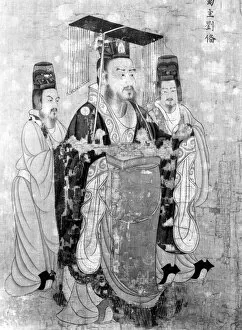Yen Li Pen Collection
"Yen Li Pen: A Journey Through Chinese History and Art" Step into the captivating world of Yen Li Pen
All Professionally Made to Order for Quick Shipping
"Yen Li Pen: A Journey Through Chinese History and Art" Step into the captivating world of Yen Li Pen, where ancient emperors and mystical figures come to life through exquisite artworks. This collection takes us on a historical voyage, revealing the rich tapestry of China's past. Liu Bei (161-223), also known as Xuande, stands tall as a symbol of virtue and leadership. His legacy is beautifully captured in this artwork, showcasing his noble spirit that inspired generations. The Bodhisattva Avalokiteshvara (Guanyin) with vase and willow twig from the Ming dynasty transports us to a realm of spirituality. The delicate brushstrokes depict Guanyin's compassion and grace, offering solace to those in need. Intriguingly mysterious is the portrait of a woman in green, possibly from the Ming dynasty or 17th century. Created by an unknown artist, her enigmatic gaze leaves us wondering about her story and role in history. Fei Ti (c554-570), Chen emperor of China during 566-568, emerges from a painted silk scroll with regal splendor. The intricate details showcase his authority while hinting at the complexities he faced during his reign. Wen Ti (522-566), also known as Chen Qian, captivates our attention with his commanding presence. As we delve deeper into this painting on silk scroll, we uncover layers of wisdom and strength that defined his rule. Houzhu (553-604), also known as Chen Shubao, reveals himself through artistry that captures both power and vulnerability. This depiction invites contemplation on the burdens carried by rulers throughout history. Zhaodi (94-74 B. C. ), Han emperor of China during 87-74 B. C. , takes center stage amidst ancient scrolls. His imperial aura resonates through time as we marvel at how he shaped the destiny of a nation.













